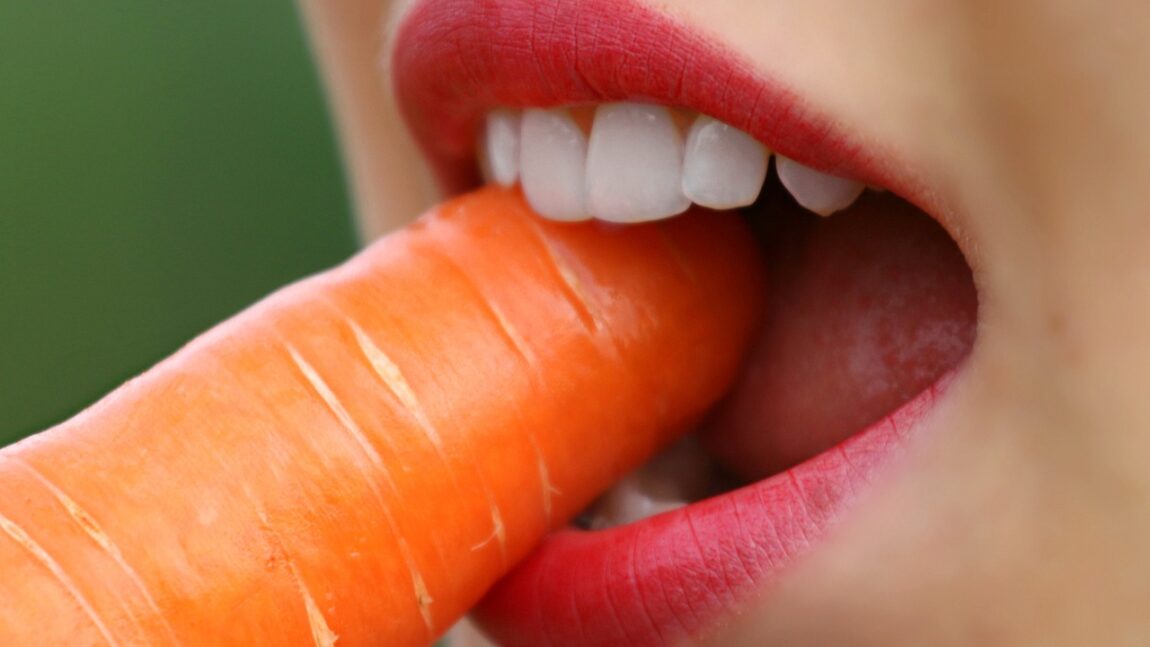Picture this: Your friend tells you to smile for a photo and you flash a sheepish closed-mouth grin to hide the stains on your teeth. If this is you and you’re looking for a solution, you’re not alone. Research shows that more and more people are seeking that pearly white smile. In fact, the worldwide market value of teeth whiteners jumped 34% from 2014 to 2024.
Many things can stain teeth (including a high fever!). The team at Hancock and Johnston Dentistry is equipped to help you brighten your teeth. Read on to see what methods you can use to do so, and how to prevent stains from recurring.
Types of Teeth Stains
There are three types of teeth stains and many different colors that could be plaguing you. Which one describes what you’re up against?
1. Extrinsic Stains
This is the most surface-level stain, and the easiest to remove. It’s likely that the stains are only affecting the tooth enamel. Your enamel comes in contact with everything you put in your mouth. Over time, your teeth will absorb some of these recurring colors.
The most common causes of extrinsic stains include:
- Food (Berries)
- Beverages (Red wine)
- Tobacco
2. Intrinsic Stains
This type of stain is located within the tooth, which makes it less responsive to over-the-counter or home remedies. You’ll likely need dental office treatments. These stains often show up grayish.
Intrinsic stains may be caused by:
- Certain medications
- Trauma or injury to a tooth
- Tooth decay
- Too much fluoride
- Genetics
3. Age-Related Stains
As you get older, your tooth enamel gets thinner and your dentin begins to show through creating a yellowish color. Similar to intrinsic stains, age-related staining affects the dentin of your teeth. So you’d likely benefit from office treatments.
STAIN CAUSES BY COLOR
- Yellow: Smoking, chewing tobacco, beverages (tea, coffee, red wine), a diet that’s high in simple sugars, certain medications, poor oral hygiene, chronic dry mouth
- Brown: Tobacco use, beverages (tea, coffee, cola, red wine), fruits (blueberries, blackberries, pomegranates), untreated tooth decay, tartar buildup
- White: A cavity can cause a white spot on your tooth, too much fluoride
- Black: An advanced dental cavity, fillings and crowns that contain silver sulfide, liquid iron supplements
- Purple: Wine
How to Remove Teeth Stains
The yellower your tooth stains, the easier time you will have removing them. Deep brown stains, such as those caused by use of the antibiotic tetracycline during childhood, can be very difficult to get rid of.
Over-the-Counter Treatments
These treatments usually work best with extrinsic stains, nowever, results may still be limited.
- Tooth whitening gel and trays: These contain peroxide-based bleaching agents. You fill trays with whitening gel, then put over your teeth.
- Tooth whitening strips: This at-home or prescription methods use strips with pre-applied whitening gel that you stick to your teeth.
- Whitening pens: These pens contain bleaching gel that you brush onto your teeth in a thin layer.
- Whitening mouthwashes and rinses: Those that contain hydrogen peroxide
- Whitening toothpaste: Those that contain sodium hypochlorite. Using an electric toothbrush may also be more effective in removing surface stains.
In-Office Treatments
These treatments work best with intrinsic or age-related stains. Dentists have access to stronger products and technology than you can use at home. In-office treatments work quickly and last longer.
How to Prevent Teeth Stains
To prevent teeth stains, start by practicing good oral hygiene. Brush and floss three times a day.
Whitening toothpaste and mouthwash: These work by using abrasives to gently scrub stains from the surface. Some also include bleaching agents.
Brush after eating pigmented foods: If you’re planning to consume food or drinks high in sugar, chromogens or tannins, make sure to brush and floss as soon as you’re done.
Cut back: Quit smoking. Limit consumption of foods and beverages that stain teeth.
Rinse often: If you can’t get to a restroom to brush your teeth, drink water.
Use a straw: Drink coffee, tea, and cola through a straw to avoid staining your teeth again.
A Final Word
Before you try any of the teeth whitening methods, it’s recommended that you contact your provider at Hancock and Johnston Dentistry to make sure it’s safe. Some remedies may increase gum and tooth irritation. And while you’re at it, schedule your regular checkup so we can periodically work on reducing staining through your standard cleaning!


